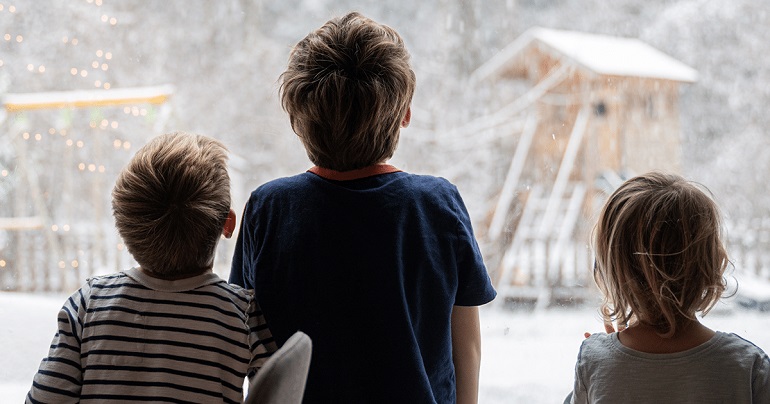4 Winter Climate Events That Could Impact Your Air Quality
3 minute read
Click play to listen to 4 Winter Climate Events That Could Impact Your Air Quality.
We know that severe winter weather can cause havoc on the roadways and make you, well, really cold. But how does the winter climate impact the quality of the air we breathe? Let’s look at four winter climate events that can jeopardize the health of our air, and discuss ways to combat those risks.
Four Winter Climate Events That Impact Air Quality
For localized information about the air quality in your region, check out the AprilAire State of Your Air tool.
Blizzards
Extreme snowstorms are increasingly common in the United States, with the eastern part of the country seeing the worst of it in recent years. These relentless snow showers test local infrastructure and often radically change the course of daily life during the winter season.
Loss of electricity is one of the most impactful consequences of blizzards, forcing people to find alternative heating methods like fireplaces, generators, and wood stoves. While the use of these is often necessary for keeping warm, they also introduce air pollutants into the home and put people at risk.
When using combustible heat sources, create ventilation by cracking a window (when possible) or using an AprilAire air purifier.
Blizzards also sap moisture from the air, creating dry and uncomfortable conditions. This extremely dry air creates an ideal environment for viruses while simultaneously drying out your mucus membranes and making you more susceptible to illness.
So while you’re snowed-in during the winter, try to keep the relative humidity in your home between 40–60 percent. It’s simple with an AprilAire whole-home humidifier.
Snowmelt
Towering snow piles are a winter staple in many areas of the country. But once the weather starts to warm up, the resulting snowmelt can release contaminants into the ground and the air.
Here are some of the most common ground pollutants released by snowmelt, that may end up in drinking water and impact fish and wildlife:
- Oil, grease, and other motor vehicle chemicals
- Pesticides and nutrients from lawns and gardens
- Viruses, bacteria, and nutrients from pet waste or failing septic systems
- Road and sidewalk salts
- Heavy metals from roof shingles, motor vehicles, and other sources
Meanwhile, airborne pollutants get trapped in snow and are then released in higher concentrations and altered chemical states once the snow melts. Most of these pollutants come from car emissions.
For information on ways to offset snowmelt pollution, check out this AprilAire guide.
Extreme Cold
During long stretches of cold weather, airborne contaminants typically increase because of heating systems and idling vehicles.
For instance, wood burning causes an increase in particulate matter and carbon monoxide during the winter. And the colder it gets, the more wood burning is required. The same goes for vehicles. When it’s cold, people will keep their cars running for longer to make them warm. Plus, icy roads can mean more time spent behind the wheel with the engine running.
Additionally, extreme temperatures keep people indoors, where the air can be 5x more polluted than outdoor air. During these periods, it’s important to consider ways you can refresh the air in your home by increasing fresh air ventilation and air purification.
Temperature Inversion
The air pollutants created from heating and transportation can be more of an issue in the winter because of a climate situation known as a temperature inversion.
Warm air is lighter than cold air. Typically, when warmer surface air becomes polluted with smoke and other contaminants it will eventually clear out by rising into the cooler air above it. But in the wintertime, the air at the surface can often be cooler than the air above it (an inversion), which causes the cooler, polluted air to remain at the surface and put humans at risk. This air can contain things like smog, smoke, and carbon dioxide.
In situations where the surface air is polluted, it can be helpful to purify the outdoor air before it comes into your home. An AprilAire whole-home air purifier can improve the air in your home by removing contaminants and circulating fresh air.




